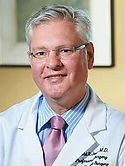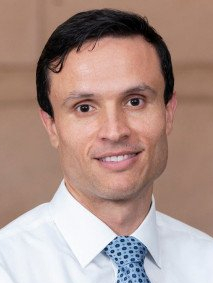Shape-sensing robotic-assisted bronchoscopy in the diagnosis of pulmonary parenchymal lesions Journal Article
| Authors: | Kalchiem-Dekel, O.; Connolly, J. G.; Lin, I. H.; Husta, B. C.; Adusumilli, P. S.; Beattie, J. A.; Buonocore, D. J.; Dycoco, J.; Fuentes, P.; Jones, D. R.; Lee, R. P.; Park, B. J.; Rocco, G.; Chawla, M.; Bott, M. J. |
| Article Title: | Shape-sensing robotic-assisted bronchoscopy in the diagnosis of pulmonary parenchymal lesions |
| Abstract: | Background: The landscape of guided bronchoscopy for the sampling of pulmonary parenchymal lesions is evolving rapidly. Shape-sensing robotic-assisted bronchoscopy (ssRAB) recently was introduced as means to allow successful sampling of traditionally challenging lesions. Research Question: What are the feasibility, diagnostic yield, determinants of diagnostic sampling, and safety of ssRAB in patients with pulmonary lesions? Study Design and Methods: Data from 131 consecutive ssRAB procedures performed at a US-based cancer center between October 2019 and July 2020 were captured prospectively and analyzed retrospectively. Definitions of diagnostic procedures were based on prior standards. Associations of procedure- and lesion-related factors with diagnostic yield were examined by univariate and multivariate generalized linear mixed models. Results: A total of 159 pulmonary lesions were targeted during 131 ssRAB procedures. The median lesion size was 1.8 cm, 59.1% of lesions were in the upper lobe, and 66.7% of lesions were beyond a sixth-generation airway. The navigational success rate was 98.7%. The overall diagnostic yield was 81.7%. Lesion size of ≥ 1.8 cm and central location were associated significantly with a diagnostic procedure in the univariate analysis. In the multivariate model, lesions of ≥ 1.8 cm were more likely to be diagnostic compared with lesions < 1.8 cm, after adjusting for lung centrality (OR, 12.22; 95% CI, 1.66-90.10). The sensitivity and negative predictive value of ssRAB for primary thoracic malignancies were 79.8% and 72.4%, respectively. The overall complication rate was 3.0%, and the pneumothorax rate was 1.5%. Interpretation: This study was the first to provide comprehensive evidence regarding the usefulness and diagnostic yield of ssRAB in the sampling of pulmonary parenchymal lesions. ssRAB may represent a significant advancement in the ability to access and sample successfully traditionally challenging pulmonary lesions via the bronchoscopic approach, while maintaining a superb safety profile. Lesion size seems to remain the major predictor of a diagnostic procedure. © 2021 American College of Chest Physicians |
| Keywords: | diagnostic yield; pulmonary nodule; robotic-assisted bronchoscopy |
| Journal Title: | Chest |
| Volume: | 161 |
| Issue: | 2 |
| ISSN: | 0012-3692 |
| Publisher: | American College of Chest Physicians |
| Date Published: | 2022-02-01 |
| Start Page: | 572 |
| End Page: | 582 |
| Language: | English |
| DOI: | 10.1016/j.chest.2021.07.2169 |
| PUBMED: | 34384789 |
| PROVIDER: | scopus |
| PMCID: | PMC8941601 |
| DOI/URL: | |
| Notes: | Conference Paper -- Export Date: 1 March 2022 -- Source: Scopus |
Altmetric
Citation Impact
BMJ Impact Analytics
MSK Authors
Related MSK Work
















